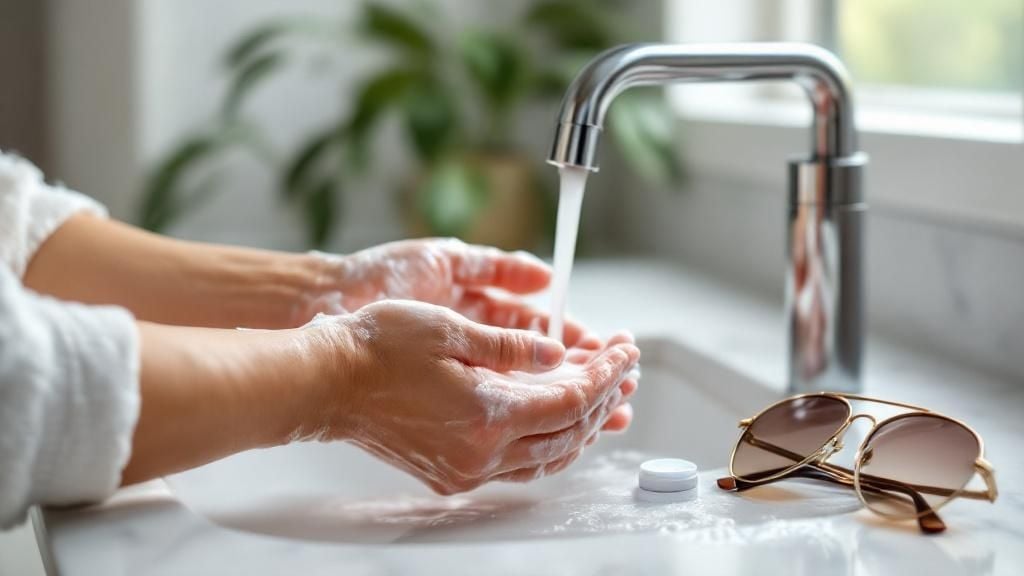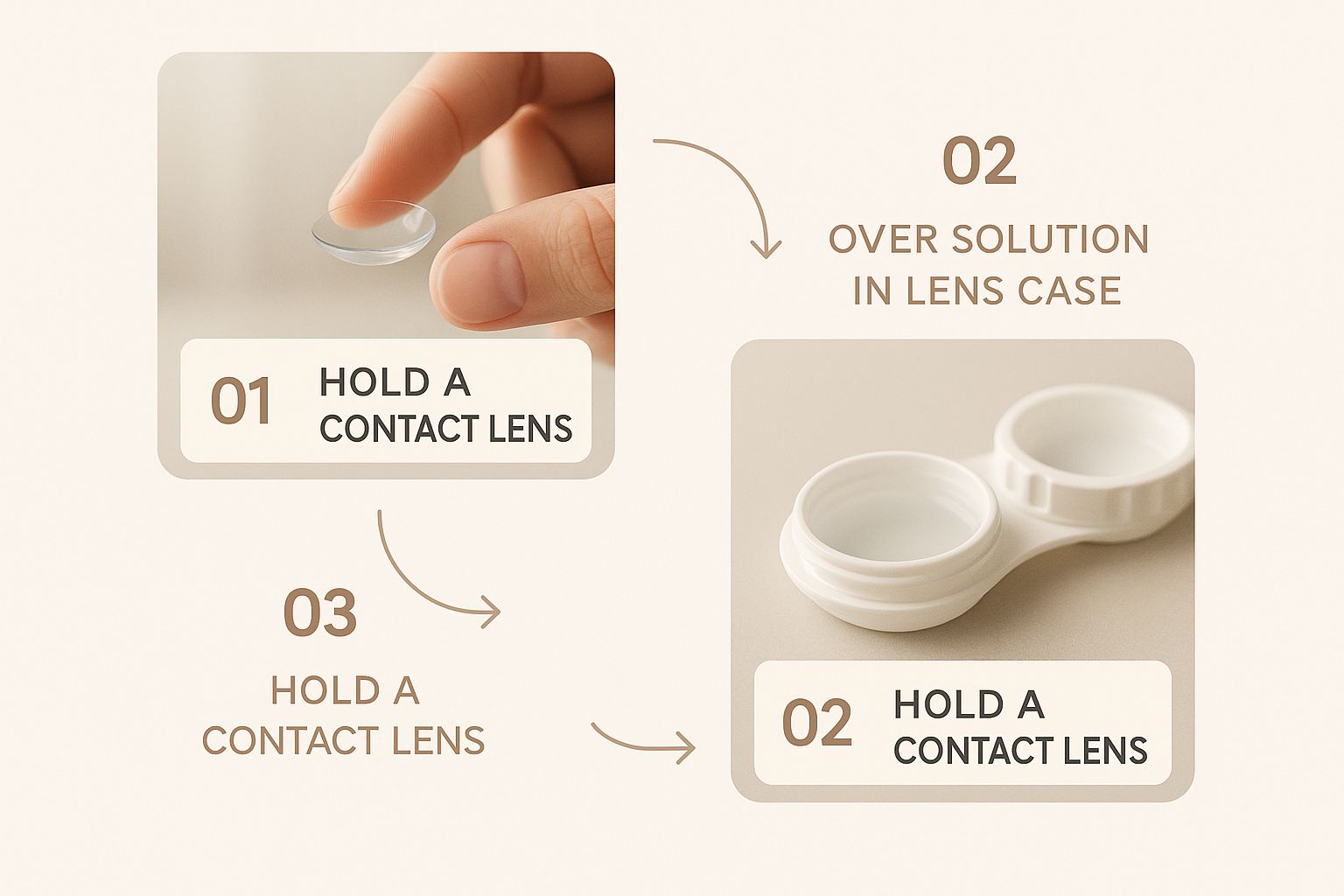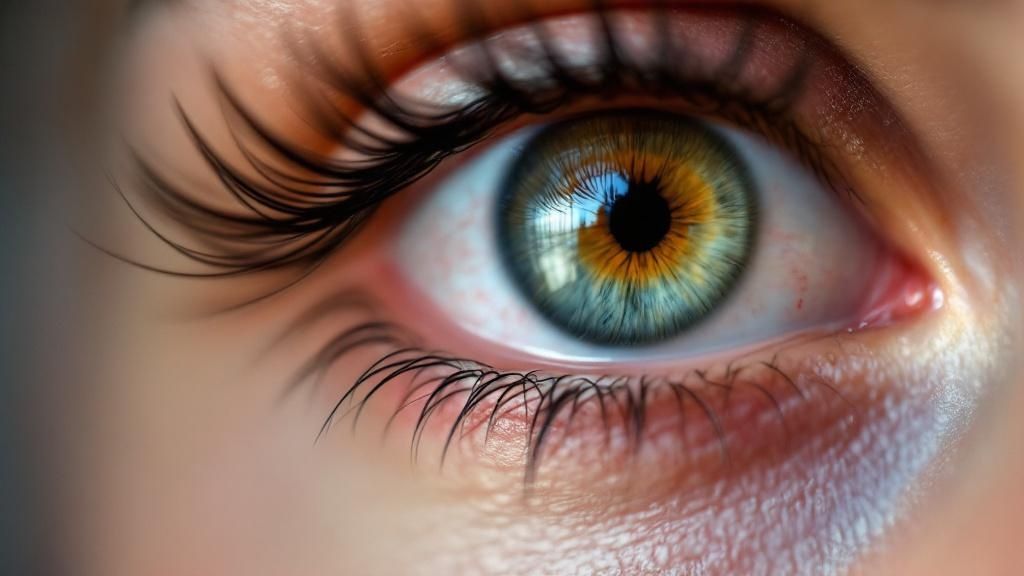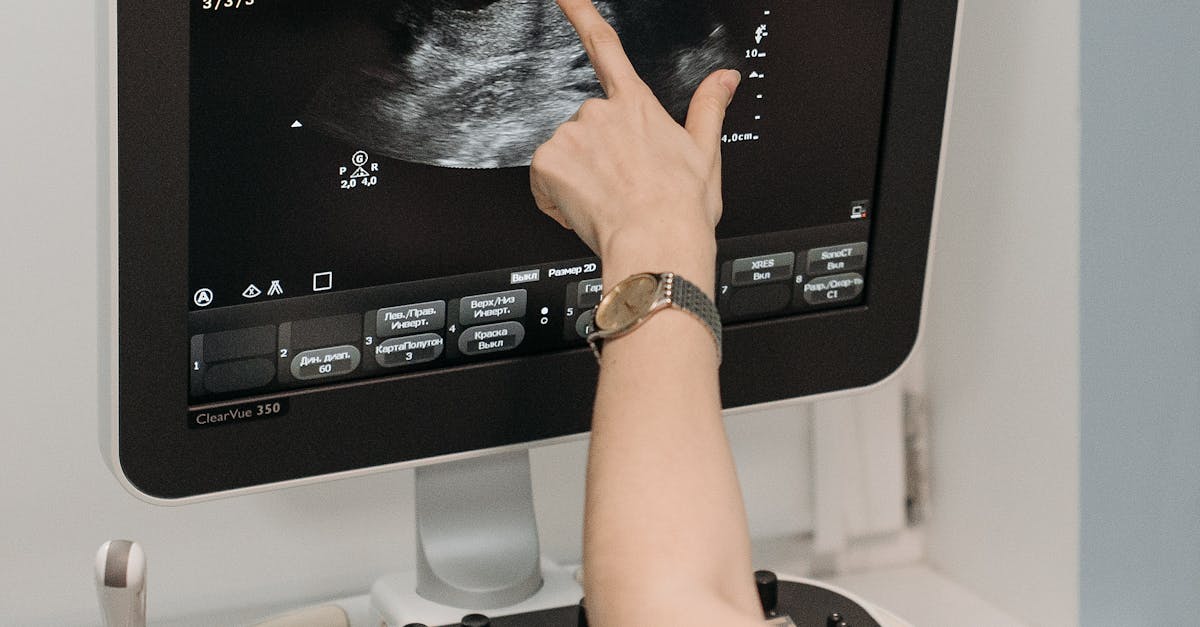Let's be honest, nobody has time for an eye infection. Whether you're teeing off at Glendale Lakes Golf Club or running errands along Bloomingdale Road, the last thing you want is the irritation, redness, and general misery that comes with one. As your local optometry boutique in Glendale Heights, iDoctor is here to help you keep your vision clear and comfortable.
The good news? Preventing most common eye infections isn't complicated. It really just comes down to a few key habits: keeping your hands clean, handling your contacts correctly, and being smart about your surroundings. Think of this as your guide to keeping your vision clear and comfortable right here in the Chicagoland suburbs.
We'll skip the jargon and get straight to the practical stuff that makes a real difference. First, it helps to know what you’re up against.
What’s Actually Causing That Eye Infection?
Most eye infections are caused by tiny invaders that make their way into your eye and set up shop. The usual suspects include:
- Bacteria: This is the culprit behind bacterial conjunctivitis, what most people call "pink eye." It's incredibly contagious and often spreads from unwashed hands touching the eye.
- Viruses: Just like the common cold, viral pink eye is another highly contagious version. It usually causes a more watery discharge and can spread like wildfire through close contact.
- Fungi: This one is much rarer, but it can be serious. Fungal infections often happen after an eye injury, especially if it involves something organic like a tree branch or plant matter.
- Allergens: While not technically an infection, things like pollen and dust can trigger allergic conjunctivitis. The constant itching and rubbing can easily damage the eye’s surface, leaving it wide open for a secondary bacterial or viral infection to move in.
At iDoctor, our goal is simple: to give our Glendale Heights community the best possible eye care. A big part of that is prevention. Through our detailed eye exams in Glendale Heights, we can spot potential risks before they become problems and build a plan to keep your eyes healthy for the long haul. Your vision is our priority.
Your Hands Are the First Line of Defense in Eye Health
Let's start with the basics, because it’s honestly the single most effective way to prevent eye infections. Your hands touch everything. Think about it—from holding a handrail on the Metra to pushing a cart at the grocery store, they are constantly picking up germs.
When you touch or rub your eyes, you're giving those germs a direct path to cause trouble. This simple, often unconscious, act can lead to nasty and contagious conditions like conjunctivitis (pink eye). So, your first line of defense isn't a special product; it’s just good, old-fashioned hand hygiene. It’s not just if you wash your hands, but how and when.
When to Wash Your Hands
Timing is critical. Building a habit of washing your hands at key moments can slash your risk of an eye infection without you even having to think about it.
It's a good idea to always wash your hands thoroughly:
- Before touching your contact lenses: This one is non-negotiable. Clean hands are a must, whether you're putting contacts in or taking them out.
- Before and after applying eye makeup: Makeup applicators can be a breeding ground for bacteria. Clean hands stop you from transferring germs to your products and then directly into your eyes.
- After using the restroom: This is just fundamental hygiene, but it has a huge impact on keeping your eyes healthy.
- After being in crowded public places: Think about a busy afternoon at Stratford Square Mall or a local community event. Your hands have been everywhere.
- After sneezing, coughing, or blowing your nose: This simple step prevents you from spreading viral or bacterial particles from your hands to your eyes.
The Right Way to Wash
A quick splash of water isn't going to do the job. To really get rid of germs, you need a proper technique. And you don’t need fancy antibacterial soaps—plain soap and water work wonders when used the right way.
Here’s the simple but powerful process:
- Wet your hands with clean, running water.
- Lather up with soap. Be sure to scrub the backs of your hands, get in between your fingers, and clean under your nails.
- Scrub for at least 20 seconds. If you need a timer, just hum the "Happy Birthday" song twice from start to finish.
- Rinse your hands completely under clean, running water.
- Dry your hands with a clean towel or just let them air dry.
"Many people underestimate the connection between hand and eye health. We consistently remind our patients that proper handwashing is just as important as any other part of their eye care routine, especially for contact lens wearers."
If you wear contacts, being meticulous about hygiene is even more important.
What about when you can't get to a sink? An alcohol-based hand sanitizer with at least 60% alcohol is a solid backup. Keep a bottle in your car or bag for those on-the-go moments. This one simple habit is the cornerstone of preventing eye infections and keeping your vision clear and healthy.
A Realistic Approach to Contact Lens Safety
If you wear contacts, your daily care routine is your single best defense against eye infections. This isn't about following some abstract set of rules; it's about building smart, practical habits that keep your eyes comfortable and healthy. Think about it—after a long day at the office or a dusty afternoon at a festival in Camera Park, the last thing you want is irritated, at-risk eyes.
This goes way beyond avoiding a little redness. We're talking about safeguarding your vision for the long haul. When hygiene slips, contact lenses can become a major contributor to eye infections, which is why eye care professionals are so focused on education. You can even find more data on eye infection trends over at futuremarketinsights.com.
The image below breaks down the essential steps for handling your lenses safely, making sure they're perfectly clean every time you put them in.
The takeaway is simple: clean hands and fresh solution are the bedrock of safe contact lens wear. Following this process dramatically cuts down the risk of transferring nasty bacteria to your eyes.
Key Rules for Safe Lens Wear
To keep your eyes healthy, some rules are just non-negotiable. Bending them even once can introduce bacteria that might lead to serious issues, like a painful corneal ulcer. Treat these as your daily commitment to clear, comfortable vision.
Here are the absolute must-dos:
- Never "top off" old solution. Always dump out the old solution, rinse the case with fresh solution (never tap water!), and let it air dry. Topping off is like trying to get clean in a dirty bath—it just swishes the germs around.
- Never use water on your lenses or case. Tap water isn't sterile. It contains microorganisms that can cause severe, sight-threatening infections.
- Stick to your replacement schedule. Whether you wear dailies, bi-weeklies, or monthlies, don't stretch their lifespan. Using them too long allows protein deposits and bacteria to build up, which is a fast track to an infection.
Avoiding Common (But Risky) Habits
It's surprisingly easy to fall into bad habits with contacts, but some of the most common ones carry the biggest risks. Protecting your eyes means being mindful of your environment and how you handle your lenses all day long.
For example, sleeping in your contacts is a huge no-no unless they are specifically designed for overnight wear. It drastically reduces the oxygen supply to your cornea, leaving your eyes weak and vulnerable to infection.
"A common mistake we see is patients stretching the life of their disposable lenses. It might seem like a way to save money, but the risk of developing a painful infection just isn't worth it. Your eye health has to come first."
Swimming or showering with your lenses in is another major hazard. Pools, lakes, and even your home's tap water are teeming with germs that can get trapped behind the lens and cause serious trouble. For a deeper look into this, check out our guide on how to prevent common contact lens infections from your Glendale Heights optometrist.
The table below provides a quick cheat sheet for keeping your contact lens routine safe and effective.
Contact Lens Care Do's and Don'ts
| Practice | Why It Matters |
|---|---|
| DO wash and dry hands thoroughly before handling lenses. | Prevents transferring dirt, oils, and bacteria directly to your eye. |
| DON'T use tap water to rinse or store lenses/cases. | Tap water contains harmful microorganisms like Acanthamoeba that can cause severe infections. |
| DO use fresh solution every single time. | Reusing or "topping off" solution fails to disinfect and spreads germs. |
| DON'T wear lenses longer than the prescribed schedule. | Over-wearing leads to protein buildup and bacterial growth, increasing infection risk. |
| DO replace your lens case at least every 3 months. | Cases can become contaminated over time, even with regular cleaning. |
| DON'T sleep in lenses unless they are approved for it. | Reduces oxygen to the cornea, making it more susceptible to infection. |
Following these simple guidelines is the best way to ensure your eyes stay healthy and comfortable day in and day out.
Ultimately, getting your lenses from a trusted professional, like an eye doctor in Glendale Heights, ensures you get the right fit and material for your unique eyes. At iDoctor, our contact lenses in Glendale Heights fittings are designed to maximize both your comfort and safety, giving you peace of mind with every blink.
Protecting Your Eyes From Your Environment
You might be surprised by how much your surroundings affect your eye health. Here in the Chicagoland area, we get a bit of everything—seasonal pollen that leaves a yellow film on every surface, gusty winds kicking up dust along North Avenue, you name it. All these environmental irritants can leave your eyes feeling dry, gritty, and wide open to infection.
Think about a windy spring day at East Branch Forest Preserve or even just walking past a construction site. Airborne particles like dust, pollen, and other pollutants are constantly flying around, and they can easily land in your eyes. When your eyes get irritated, the natural instinct is to rub them, but that's one of the worst things you can do. You're just transferring germs from your hands and potentially scratching your cornea, which is like rolling out the welcome mat for bacteria.
Shielding Your Vision Outdoors
One of the easiest—and most stylish—ways to defend your eyes is with a good pair of sunglasses. They aren't just for cutting down glare. They're a physical barrier. A quality, well-fitting pair of sunglasses will block wind, debris, and, most importantly, 100% of harmful UV rays.
This simple step is crucial for preventing both immediate irritation and long-term damage. At iDoctor, we have a huge selection of designer eyeglasses in Glendale Heights, including prescription sunglasses from top brands like Gucci, Tom Ford, and Ray-Ban. You don't have to choose between protecting your eyes and looking good.
The World Health Organization (WHO) even includes environmental factors in its global health initiatives. The SAFE strategy—Surgery, Antibiotics, Facial cleanliness, and Environmental improvement—shows just how critical a clean environment is for preventing eye infections like trachoma. You can learn more about this public health approach from the WHO's official factsheet.
Protecting Your Eyes at Home and Work
Your indoor environment is just as important. Kicking off a DIY project that involves sawdust, chemicals, or even just some vigorous yard work? That's a huge risk for your eyes. You absolutely need to wear proper protective eyewear. And no, your regular glasses don't count. You need something that seals around your eyes to keep foreign objects out. We cover this in more detail in our guide on essential eye safety tips.
Another big one these days is digital eye strain. We all spend hours staring at screens, which causes us to blink a lot less than we normally would. This leads to dry, tired eyes. When your eyes are dry, that protective tear film that washes away germs and debris isn't doing its job, making you more vulnerable to infection.
A few simple habits can make a world of difference:
- Practice the 20-20-20 rule: Every 20 minutes, take a 20-second break to look at something 20 feet away. Set a timer if you have to!
- Keep eye drops handy: A few drops of lubricating artificial tears can restore moisture and bring immediate relief.
- Position your screen properly: Make sure your monitor is just below eye level and angled to reduce glare.
Paying attention to your environment, both inside and out, is a powerful way to stay ahead of eye infections and keep your vision comfortable and clear.
Simple Lifestyle Habits for Healthier Eyes
Preventing eye infections isn't just about what you avoid—it’s also about what you actively do to boost your body's natural defenses. The daily choices you make with your diet, rest, and personal hygiene lay the groundwork for strong, resilient eyes. You'd be surprised how a few small tweaks to your routine can dramatically lower your risk of developing a painful infection.
It really does start with what you put in your body. A diet loaded with vitamins A, C, and E, plus omega-3 fatty acids, is fantastic for maintaining healthy eye tissue. Think leafy greens, citrus fruits, nuts, and fatty fish like salmon. Staying hydrated is just as important; it helps your eyes produce a healthy tear film that naturally washes away debris and potential troublemakers.
The Hidden Dangers of Sharing
One of the fastest ways to spread bacteria and viruses is by sharing personal items that touch your face and eyes. It might seem harmless to borrow a friend’s eyeliner in a pinch or grab a family member’s towel, but these things are perfect vehicles for germs.
To keep your eyes safe, make these items for your use, and your use only:
- Towels and washcloths: These are notorious for trapping bacteria, especially when they're damp.
- Makeup and brushes: Sharing mascara, eyeliner, or eyeshadow is like sending an open invitation for cross-contamination.
- Eye drops: The tip of an eye drop bottle can easily get contaminated. It should never touch your eye directly, and definitely should never be shared.
- Eyeglasses: Swapping glasses can transfer germs from one person's face to another. Keeping your own pair clean is key. If you need some pointers, you can learn more about the best ways for how to clean eyeglasses in our helpful guide.
Here’s a common mistake I see: people assume that if an item looks clean, it’s safe to share. But microscopic bacteria and viruses are invisible, which is why a strict "no sharing" rule for anything that comes near your eyes is so critical.
Smart Makeup Habits for Eye Health
If you wear makeup, a clean routine is absolutely non-negotiable. Your cosmetics and the tools you use can quickly become a breeding ground for bacteria if you're not careful. It’s best to think of your makeup bag as a zone where hygiene is the number one priority.
Make these rules a part of your everyday routine to protect your vision:
- Wash your brushes regularly. Seriously. Clean your makeup brushes at least once a week with a gentle cleanser to get rid of product buildup and lingering bacteria.
- Replace products on schedule. Liquid makeup has a short shelf life. Mascara and liquid eyeliner need to be tossed every three months, no exceptions.
- Never add water or saliva. It's tempting to try and re-wet a drying mascara tube, but doing so introduces a flood of bacteria right into the product you're about to put on your eyes.
- Always take your makeup off before bed. Sleeping in makeup can clog the tiny oil glands at the base of your eyelashes, which can lead to irritation and nasty infections like styes.
Adopting these simple habits creates a powerful defense system for your eyes. By nourishing your body and being mindful of what you let near your face, you take back control of your eye health and slash your chances of getting an infection.
Why You Can't Skip Your Annual Eye Exam
Even with the best at-home hygiene, nothing replaces a professional's expert eye. Think of your annual eye exam as your secret weapon—the single most effective tool you have for protecting your vision and stopping infections before they even have a chance to start.
When you come in for one of our detailed eye exams in Glendale Heights, we're doing so much more than just checking your prescription. We're looking for the earliest, most subtle signs of potential trouble. These appointments are a comprehensive health check for your eyes, from front to back.
A Deeper Look into Your Eye Health
Here at iDoctor, we don’t just skim the surface. Our 30-minute exams use high-resolution imaging to get a complete picture of your ocular health. This technology lets us spot underlying issues that are completely invisible to the naked eye. Things like minor inflammation or partially blocked tear ducts can make you far more vulnerable to infections, and we can catch them.
This detailed view is how we can give you personalized advice that actually fits your life and your specific risk factors.
Unfortunately, many people miss this crucial connection. One recent survey found that only 32.27% of adults really understood how to prevent eye diseases, highlighting a major gap in public awareness. You can read the full study on eye disease prevention awareness yourself.
Your annual exam is the perfect time to ask us anything. We can discuss your concerns, make sure your glasses or contacts prescription is perfectly dialed in, and give you tips for long-term eye safety and comfort.
This proactive approach makes all the difference. By catching potential problems early, we can handle them before they become painful, vision-threatening infections. Learn more about the importance of routine eye exams and see why they are your first and best line of defense for a lifetime of healthy vision.
FAQs about Preventing Eye Infections in Glendale Heights
We get a lot of fantastic questions from our patients. Here are some of the most common things people ask about keeping their eyes healthy and infection-free here in Glendale Heights.
What are the first signs of an eye infection I should look out for?
You'll want to be on the lookout for a few key things: redness that won't go away, persistent itching, or a gritty feeling like there's sand in your eye. Other tell-tale signs are watery or thick discharge and a new sensitivity to light. If you notice any of these symptoms, especially as a contact lens wearer, it's best to see an optometrist right away. Catching it early can make a huge difference.
Do you accept vision insurance at iDoctor in Glendale Heights?
Yes, we absolutely do. At iDoctor, we believe that premium eye care should be accessible. We accept all major vision insurance plans to help cover the costs of your comprehensive eye exams, contact lens fittings, and eyewear purchases. You can enjoy our curated selection of designer frames and advanced eye care services with peace of mind.
My child plays sports for the Glenside Vikings. How can I prevent eye injuries?
That's a great question, and it's something every parent of a young athlete should be thinking about. Protective eyewear is non-negotiable for sports. We always recommend properly fitted, ASTM-certified sports goggles. They're built to withstand impact and can even be made with your child's prescription. Think of them as a helmet for the eyes—they're the single best defense against stray balls, elbows, and debris that can cause serious injuries and infections.
Your vision is too important to take for granted. By following these tips and partnering with the best optometrist in Glendale Heights, you can keep your eyes healthy for years to come. Whether you need a routine check-up or are looking for the perfect pair of Gucci glasses near me, iDoctor is your partner in maintaining a lifetime of healthy sight here in Glendale Heights.








